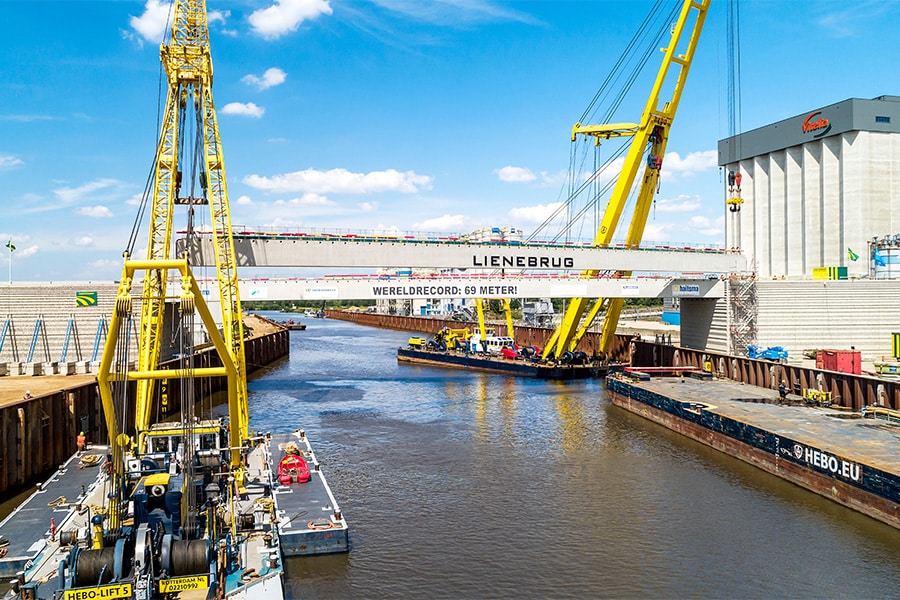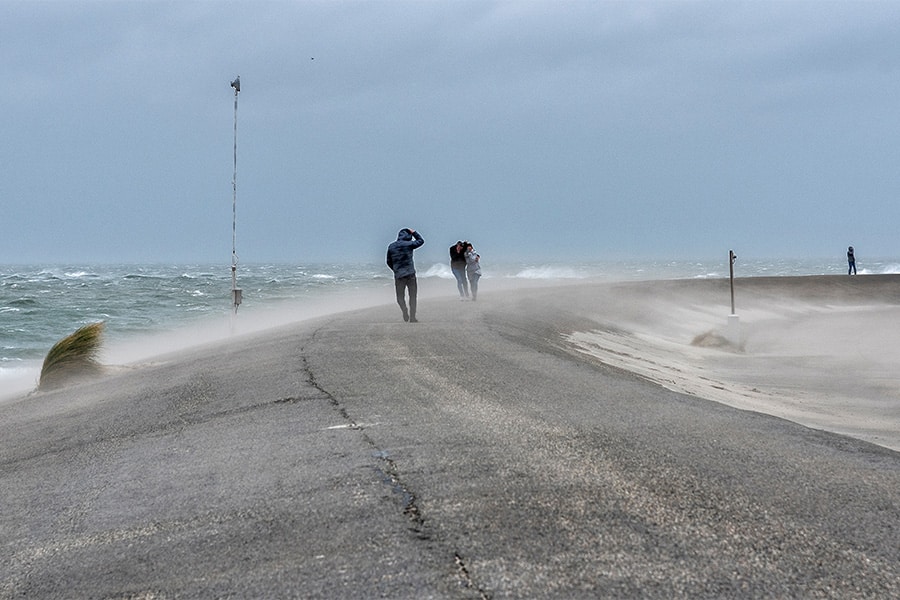
Remaining resilient in changing circumstances
'Climate is changing faster than our network'
Climate adaptation and sustainability are often mentioned in the same breath. Yet there is an important distinction between the two themes. Speaking is Mireille Götz, Climate Adaptation focal point manager at Rijkswaterstaat. "Sustainability focuses mainly on mitigation, limiting climate impact and CO2 emissions. Climate adaptation is about remaining resilient in changing circumstances. And that's quite a challenge for Rijkswaterstaat, because the climate is changing faster than our network of roads, waterways and waterways."
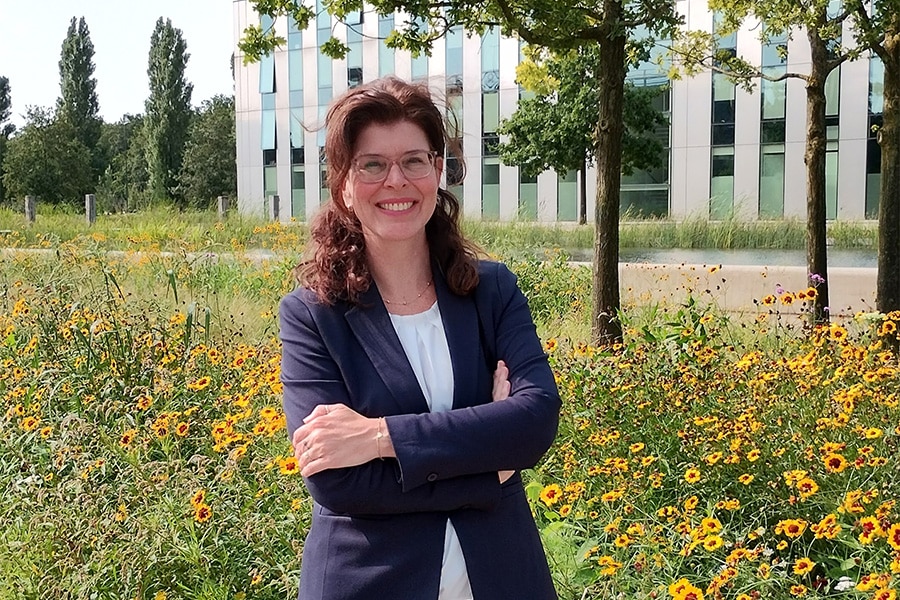
Rijkswaterstaat is working with six focal points. "These are impulse programs designed to achieve additional acceleration for the organization," Götz explains. "With the Climate Adaptation focus point, we consider a number of short- and long-term activities about which no clear starting points have yet been established. For example, how much flooding we are willing to accept. After all, we can no longer solve everything and we cannot influence the weather. That is why we are having discussions with our policy colleagues about what we do or do not consider socially acceptable at what cost and what performance. All these themes, and the agreements about them, must be embedded in all steps of our work processes. From the preparation of programming to the work outside in the field. There is also an important spatial component in the focal point. In order to continue acting climate-adaptively into the future, we need physical space, for example to build water storage or strengthen our dikes."
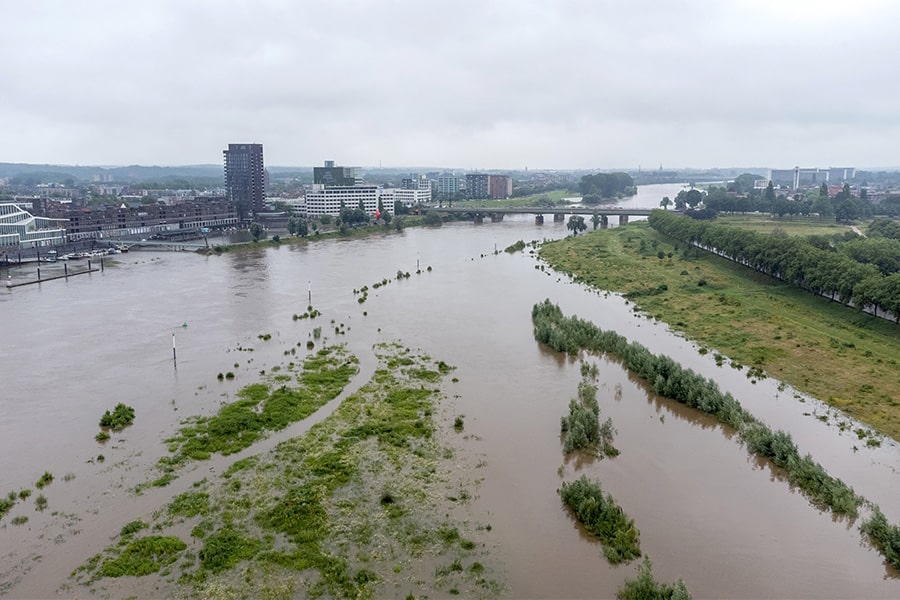
Conservation task
Short-term action is also needed. In this regard, Götz hints at the conservation task. "From the Climate Adaptation focal point, we have developed and tuned an action perspective to take small 'no regret' measures in the ongoing production or to implement certain things just a bit more robustly, so that they are more resistant to the effects of climate change. Because those effects are already quite visible on our networks. With longer periods of drought, more salinization occurs and there may be a shortage of fresh water. That affects shipping. In extreme heat, you see moveable bridges clamp down. They are now often cooled with firewater, but that is a rather expensive exercise. One possible precautionary measure is to permanently attach pipes to the bridge deck so that you can pump up water fairly easily and cool the bridge. But applying different asphalt is also a possibility. For example, during the renovation of the Spijkenisse Bridge, light-colored asphalt is being used so that the temperature rises a little less and the steel expands less, thus reducing the chance of jamming. Wherever possible, we take climate measures in the maintenance task, without slowing down the production rate."
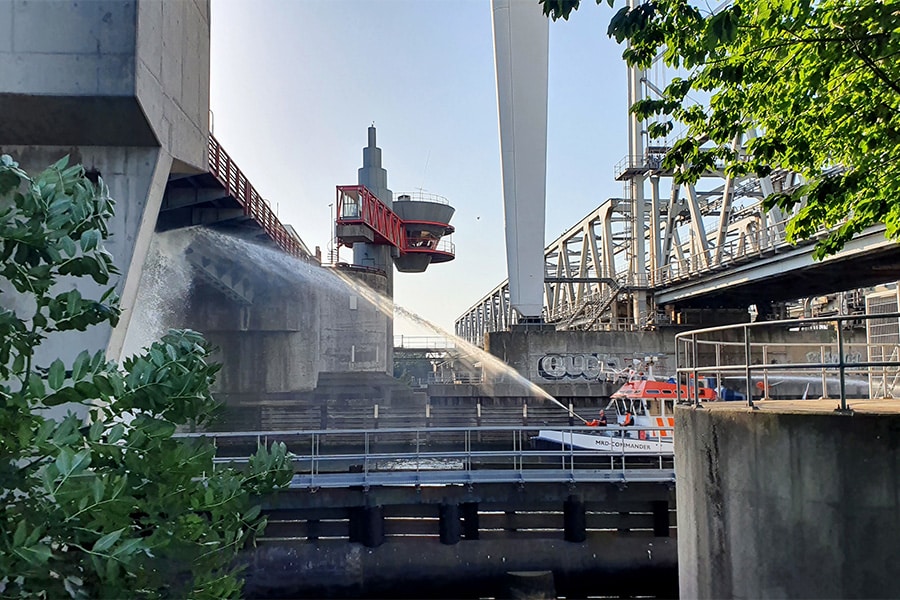
Climate scenarios
The other side of climate change is the increasing intensity of showers. "Huge downpours can lead to flooded road sections and tunnels. At times of too much water, we want to store it as much as possible in the area or nearby, so we can use it in times of scarcity. These are all considerations that must be made, and we use the most recent KNMI scenarios to adjust the measures accordingly. But here again: the weather is unpredictable, not all effects can be 100 percent covered, even if you had an infinity of people and resources," emphasizes Götz, who advocates modular construction for the long term, so that you can easily scale up or expand in the future. "When renovating a pumping station, you could anticipate the future. Suppose you would need more capacity in x-number of years, you can reserve land for this during renovation or even lay the foundations. The moment you need those extra pumps, you can scale up in capacity fairly quickly and efficiently."
Broad scope
Right now, we have an enormous number of challenges in our current network and a huge number of choices to make in order to get it right for future generations, Götz summarizes. "That extends far beyond the scope of Rijkswaterstaat. With the Climate Adaptation focal point, one of the things we are involved in is the National Adaptation Strategy, an intergovernmental strategy under the responsibility of our Ministry that focuses on making the Netherlands climate-proof and water-robust. Rijkswaterstaat is also working hard on climate adaptation, such as in the Flood Protection Program, the Sea Level Rise Knowledge Program and other major area developments. Climate adaptation is a complex playing field, given the dynamics and uncertainties. All choices are carefully considered based on the available knowledge, facts and insights, and that makes our scope to make the Netherlands resilient to climate change extremely exciting."


